An Agile Way to Architect Web Apps
Doguhan Uluca
An Agile Way to Architect Web Apps
Technical Fellow @



Five Whys, One How
- What app are we developing?
- Why do we develop the app?
- When do we develop it?
- Where do we develop it?
- Who develops it?
What do we develop?
relative size of software
What is a Line-of-Business App?
set of critical computer applications perceived as vital to running an enterprise
Source: Wikipedia
Personal development

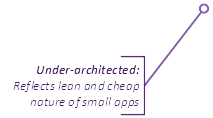
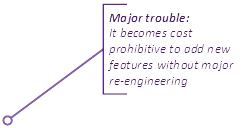
Enterprise development
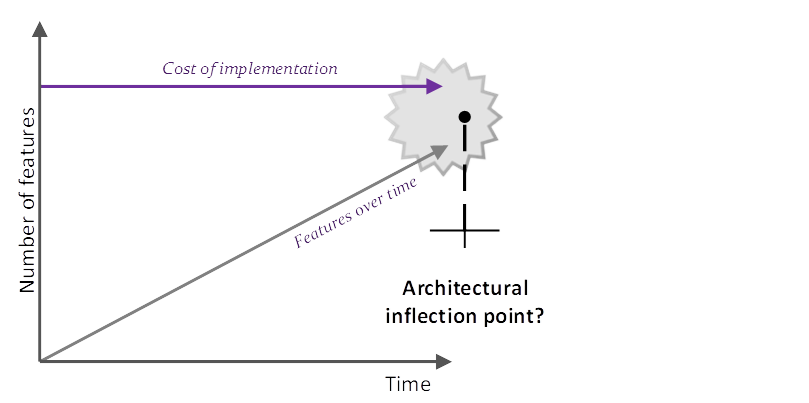
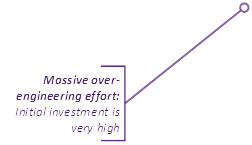
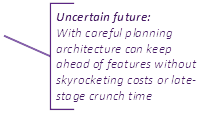
How should we develop?
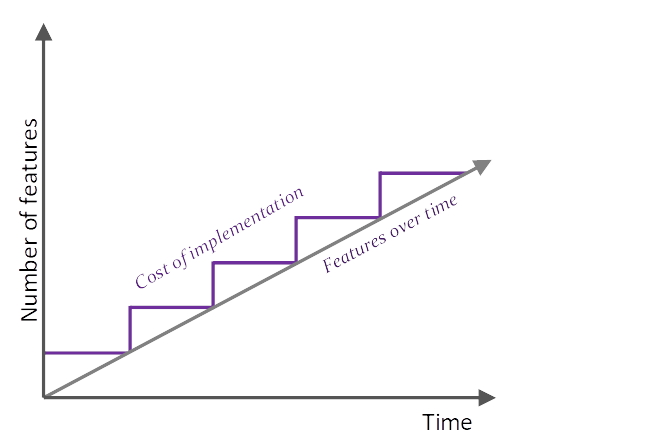

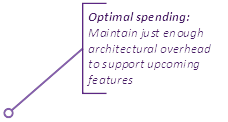
Router-First Architecture
the 80-20 solution
The Pareto Principal
What is Router-First Architecture?
- enforce high-level thinking
- ensure consensus on features, before you start coding
- plan on your codebase/team to grow
- introduce little engineering overhead
A way to
- Develop a roadmap and scope
- Design with lazy loading in mind
- Implement a walking-skeleton navigation experience
- Achieve a stateless, data-driven design
- Enforce a decoupled component architecture
- Differentiate between user controls and components
- Maximize code reuse
How to implement Router-First?
Sample Project Code
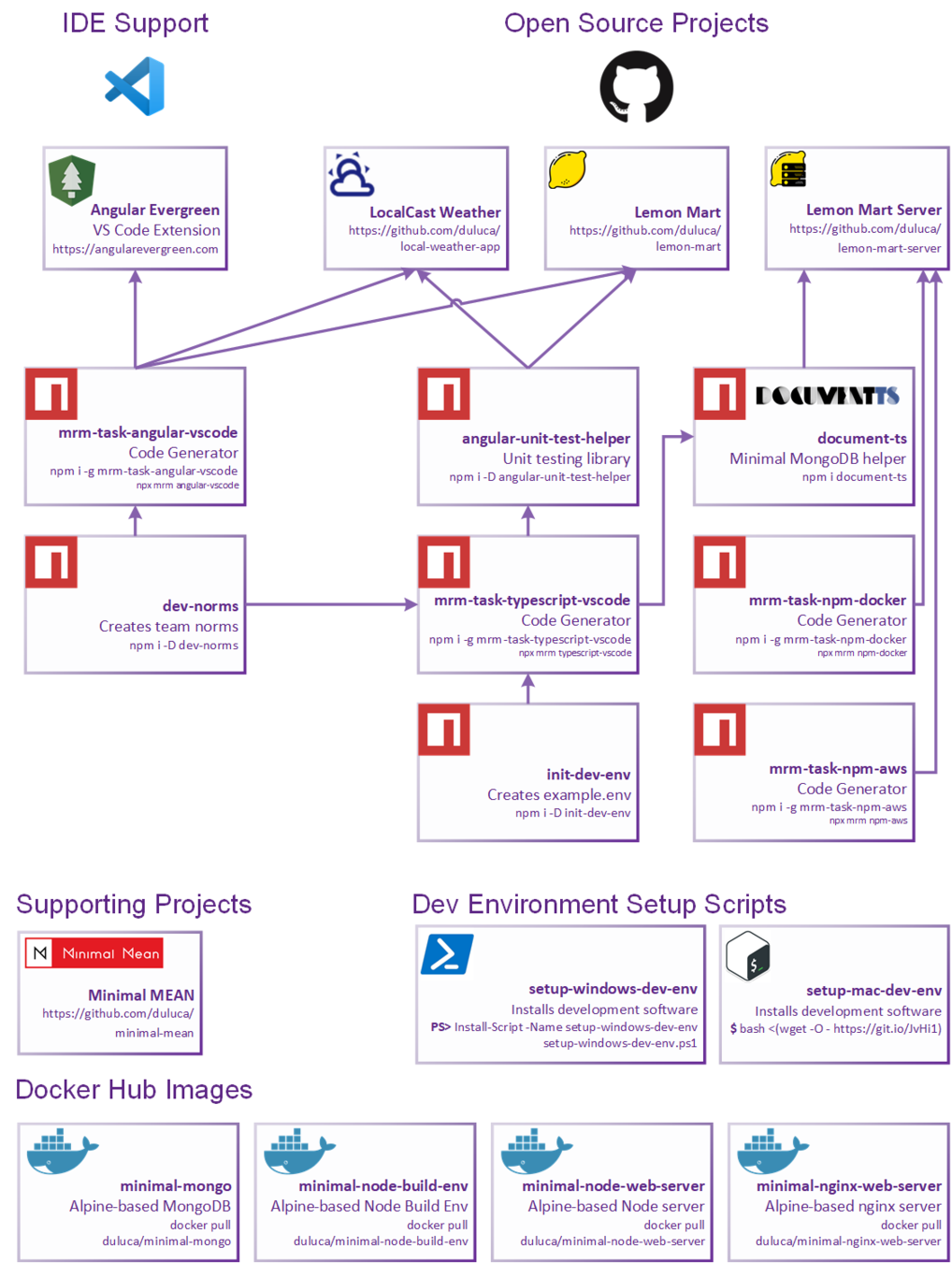

Fundamental Architecture
&
Engineering Fundamentals
High Level Goals of Architecture
- High Cohesion
- Low coupling
SOLID
DRY
Automated Testing
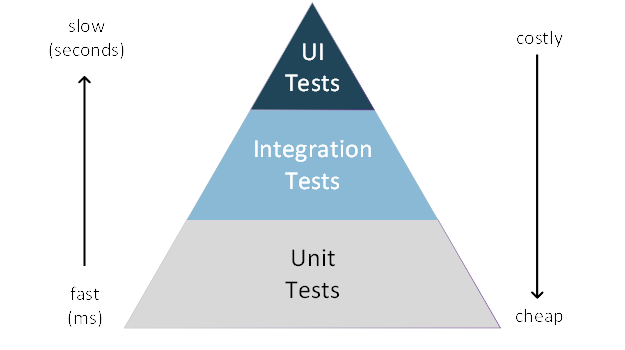
CI/CD
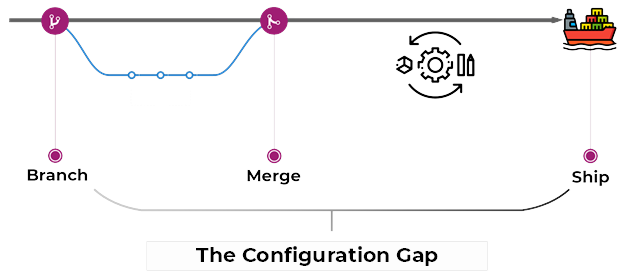
Infrastructure-as-Code closes the Configuration Gap
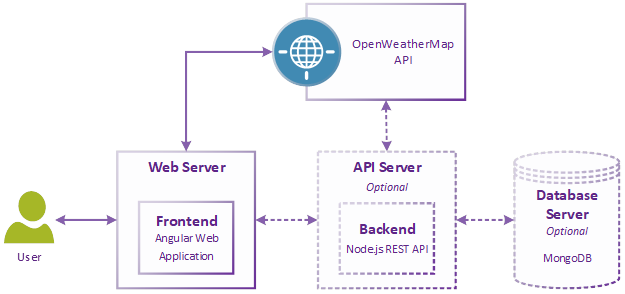
N-tier Architecture



Modern Web Architecture
- High cohesion
- Low coupling
- Asynchronous
- Non-blocking I/O
- Multi-threaded
- Parallel execution
- High availability
- Self-healing
- Auto-scaling
- RTO and RPO expressed in minutes/seconds
STATELESS
COMPOSABLE
REACTIVE
Iterative
&
Incremental






Authenticate to Authorize
implement a Login experience
achieved iteratively and incrementally
- Develop a roadmap and scope
- Design with lazy loading in mind
- Implement a walking-skeleton navigation experience
- Achieve a stateless, data-driven design
- Enforce a decoupled component architecture
- Differentiate between user controls and components
- Maximize code reuse with ES6/TypeScript
How to implement Router-First?




Lemon
Mart





Identify Stakeholders
Managers
Warehouse
Cashiers
Developers

Site Map
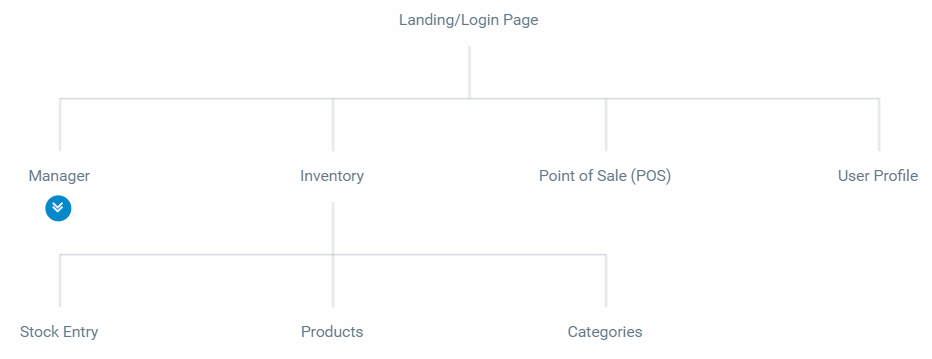
Site Map

Site Map

- Capture the vision concretely
- i.e. Site maps, mockups, user stories
- Document every artifact you create
- i.e. GitHub Wiki, Confluence
- Define the roadmap before getting on the road
- i.e. GitHub Projects, Jira
- Get high-level architecture right
- Bring tools in only when necessary
- Paper and pencil works wonders
- Everyone can/should draw: the Squid Framework, Visual Thinking
1. Develop a Roadmap and Scope
What you avoid implementing is more important than what you implement
Source: A wise developer
Develop a roadmap and scope- Design with lazy loading in mind
- Implement a walking-skeleton navigation experience
- Achieve a stateless, data-driven design
- Enforce a decoupled component architecture
- Differentiate between user controls and components
- Maximize code reuse with ES6/TypeScript
How to implement Router-First?
First-Paint Matters, A Lot
- 53% of mobile users* abandon if load times > 3 secs
- Content is consumed mostly on mobile*
- 70% in the US
- 90% in China
- Hybrid client/server-side rendering is hard and expensive
*Source: Angular Team, Google Analytics, 2018
Angular
app.ts
rootRouter
services
pipes
modules
/a: default
/master
/detail
/b/...
/c
childRouter
/d
/e
/f
React
App.js
Presentational
Container
Provider
Router
Component Legend
react-router
react-redux
Define Feature Modules
- manager
- inventory
- pos
- unauthorized
- none
User Roles
Modules
- ManagerModule
- InventoryModule
- PosModule
- AppModule
- UserModule
Lazy Loading Feature Modules
duluca/lemon-mart/src/app/app-routing.module.ts
{
path: 'user',
loadChildren: () =>
import('./user/user.module')
.then(m => m.UserModule),
},
{
path: 'manager',
loadChildren: () =>
import('./manager/manager.module')
.then(m => m.ManagerModule),
canLoad: [AuthGuard],
},
Lazy Loading Tips
- You may eager-load resources in the background
- Optimize your chunk sizes
- Watch for sizes of individual assets
- Enable compression on your web server
- Component level lazy loading will be possible in the future
2. Design with Lazy-Loading in Mind
- First-paint matters a lot
- Lazy loading is low hanging fruit
- Requires user roles to be defined early on
- Very difficult implement after the fact
Develop a roadmap and scopeDesign with lazy loading in mind- Implement a walking-skeleton navigation experience
- Achieve a stateless, data-driven design
- Enforce a decoupled component architecture
- Differentiate between user controls and components
- Maximize code reuse with ES6/TypeScript
How to implement Router-First?
Implement Major Structural Elements
- AppModule
- UserModule
- ManagerModule
- InventoryModule
- PosModule






- Achieve a concrete representation of the scope
- Set the stage for multiple teams to work in tandem
- Gather feedback from users
- Workout fundamental workflow and integration issues quickly
- Angular Material components makes delivering high quality UX a breeze
3. Walking-Skeleton Navigation UX
Develop a roadmap and scopeDesign with lazy loading in mindImplement a walking-skeleton navigation experience- Achieve a stateless, data-driven design
- Enforce a decoupled component architecture
- Differentiate between user controls and components
- Maximize code reuse with ES6/TypeScript
How to implement Router-First?


RxJS/BehaviorSubject as Data Anchors
duluca/lemon-mart/src/app/user/user/user.service.ts
readonly currentUser$ = new BehaviorSubject<IUser>(
this.getItem('user') ||
new User()
)Consuming BehaviorSubject
duluca/lemon-mart/src/app/user/view-user/view-user.component.ts
<div *ngIf="currentUser$ | async as currentUser">
<div>{{currentUser.firstName}}</div>
...
</div>Updating BehaviorSubject
duluca/lemon-mart/src/app/user/user/user.service.ts
updateResponse.pipe(
tap(
res => {
this.currentUser$.next(res)
this.removeItem('draft-user')
},
err => observableThrowError(err)
)
)Flux Pattern
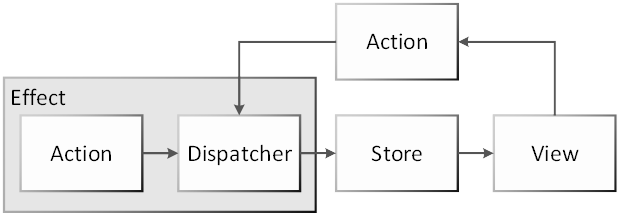
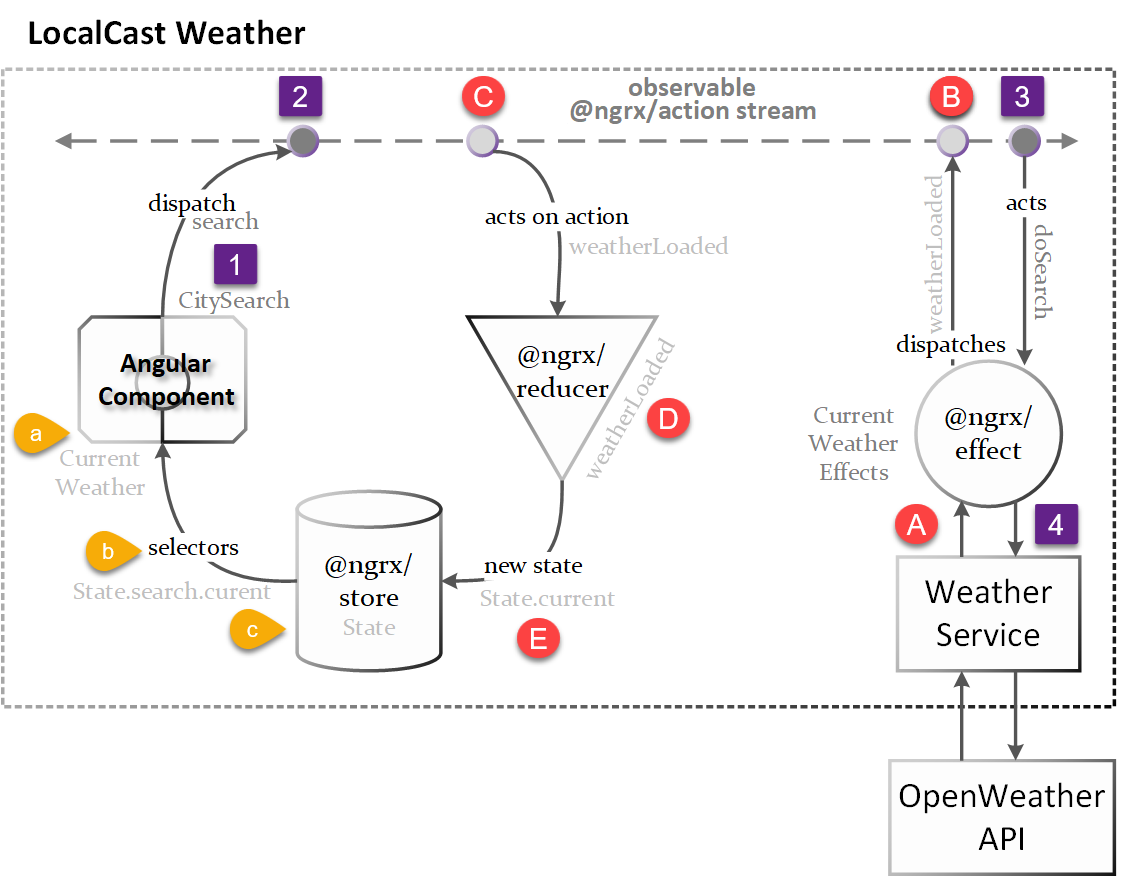
4. Be Stateless & Data-Driven
- Define observable "data anchors"
- Don't store state in components
- Data across components will be kept in sync
- Leverage RxJS features
- Write functional reactive code
- Avoid subscribing, use the async pipe instead
- If you subscribe, use SubSink to manage subscriptions
- If you subscribe in the middle of a data stream, you're not implementing reactively
Develop a roadmap and scopeDesign with lazy loading in mindImplement a walking-skeleton navigation experienceAchieve a stateless, data-driven design- Enforce a decoupled component architecture
- Differentiate between user controls and components
- Maximize code reuse with ES6/TypeScript
How to implement Router-First?

Scaling with Form Parts Reuse


Identify Reused Components
Master/Detail
Bound or Routed
Bound Context
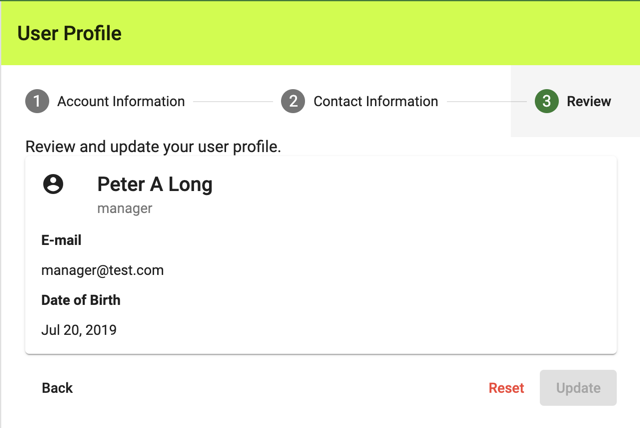
Master/Detail Context


Router Orchtrestion
Router Orchestration
duluca/lemon-mart/src/app/manager/user—table/user-table.component.ts
<a mat-button mat-icon-button
[routerLink]="[
'/manager/users',
{ outlets: { detail: ['user', { userId: row.id }] } }
]"
skipLocationChange>
<mat-icon>visibility</mat-icon>
</a>Cost of Reusability
duluca/lemon-mart/src/app/user/view-user/view-user.component.ts
import { Component, Input, OnChanges, OnInit, SimpleChanges } from '@angular/core'
import { ActivatedRoute } from '@angular/router'
import { BehaviorSubject } from 'rxjs'
import { IUser, User } from '../user/user'
@Component({
selector: 'app-view-user',
template: `
<div *ngIf="currentUser$ | async as currentUser">
<mat-card>
<mat-card-header>
<div mat-card-avatar><mat-icon>account_circle</mat-icon></div>
<mat-card-title>{{ currentUser.fullName }}</mat-card-title>
<mat-card-subtitle>{{ currentUser.role }}</mat-card-subtitle>
</mat-card-header>
<mat-card-content>
<p><span class="mat-input bold">E-mail</span></p>
<p>{{ currentUser.email }}</p>
<p><span class="mat-input bold">Date of Birth</span></p>
<p>{{ currentUser.dateOfBirth | date: 'mediumDate' }}</p>
</mat-card-content>
<mat-card-actions *ngIf="editMode">
<button mat-button mat-raised-button>Edit</button>
</mat-card-actions>
</mat-card>
</div>
`,
styles: [
`
.bold {
font-weight: bold;
}
`,
],
})
export class ViewUserComponent implements OnInit, OnChanges {
@Input() user: IUser
readonly currentUser$ = new BehaviorSubject(new User())
get editMode() {
return !this.user
}
constructor(private route: ActivatedRoute) {}
ngOnInit() {
if (this.route.snapshot.data.user) {
const snapshotUser = User.Build(this.route.snapshot.data.user)
if (!snapshotUser.dateOfBirth) {
snapshotUser.dateOfBirth = Date.now() // for data mocking purposes only
}
this.currentUser$.next(snapshotUser)
}
}
ngOnChanges(changes: SimpleChanges): void {
this.currentUser$.next(User.Build(changes.user.currentValue))
}
}
5. Be Decoupled
- Every component should be responsible for loading their own data
- Allows for composition of components
- Router enables URL driven composition/orchestration
- Don't abuse the router
- Ok to design for a parent component to contain multiple hard-coded components
- i.e. Forms, static layouts (read: most screens)
Develop a roadmap and scopeDesign with lazy loading in mindImplement a walking-skeleton navigation experienceAchieve a stateless, data-driven designEnforce a decoupled component architecture- Differentiate between user controls and components
- Maximize code reuse with ES6/TypeScript
How to implement Router-First?
- i.e. Custom Date Input, Star Rater
- Likely implements ControlValueAccessor
What's a User Control?
- i.e. Form with date inputs
- Form parts, i.e. NameInputComponent
- Reusable components, i.e. ViewUserComponent
What is a component?
User Control vs Component
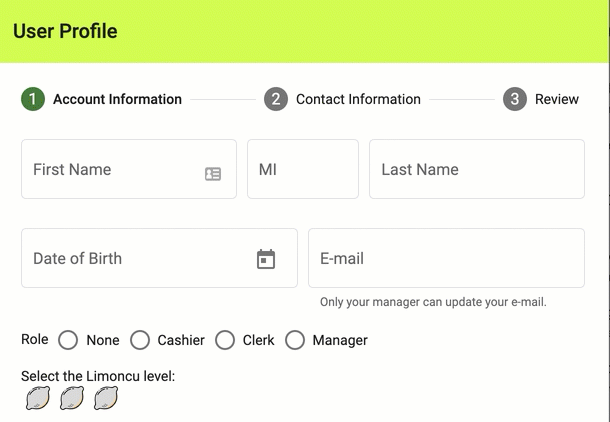
Usage
duluca/lemon-mart/user/profile/profile.component.ts
<div fxLayout="row" fxLayout.lt-sm="column" class="margin-top"
fxLayoutGap="10px">
<mat-label class="mat-body-1">Select the Limoncu level:
<app-lemon-rater formControlName="level">
</app-lemon-rater>
</mat-label>
</div>
<form [formGroup]="userForm">
<ng-template matStepLabel>Contact Information</ng-template>
<div class="stepContent">
<app-name-input [initialData]="name$ | async"
(formReady)="userForm.setControl('name', $event)">
</app-name-input>
...
</div>
</form>
- Encapsulates complicated user interaction code
- Highly coupled, convoluted, complicated code
- Using Angular features no one has ever heard of before
- Can be shipped publicly
- Be open sourced
Implementation Differences
User Controls
Components
- Encapsulates domain-specific behavior
- Code must be easy to read and understand
- Sticks to Angular basics, so code is stable and easy to maintain
- Can be shared company-wide
6. User Controls vs Components
- Wire-framing makes it possible to identify reusable elements early on
- Keep user interaction code separate from business logic
- Increase composability
- Save time and resources
- If possible, open-source controls and become part of the community
Develop a roadmap and scopeDesign with lazy loading in mindImplement a walking-skeleton navigation experienceAchieve a stateless, data-driven designEnforce a decoupled component architectureDifferentiate between user controls and components- Maximize code reuse with ES6/TypeScript
How to implement Router-First?
- Documents shape of data
- Pass abstractions, not concretions
- Separate internal data shape from external shape
Interfaces
- Aim for a flat data hierarchy
- Flatten complicated data structures in services
- Arrays and simple shapes for common objects are okay
- i.e. a name object or a common domain-specific object
Interface Tips
Interfaces
duluca/lemon-mart/src/app/user/user/user.ts
export interface IUser {
id: string
email: string
name: IName
…
address: {
line1: string
line2: string
city: string
state: string
zip: string
}
phones: IPhone[]
}
export interface IName {
first: string
middle?: string
last: string
}
duluca/lemon-mart/src/app/user/user/user.ts
export interface IPhone {
type: string
number: string
id: number
}
export class User implements IUserWork with Abstractions
duluca/lemon-mart/src/app/user/user/user.service.ts
getUser(id): Observable<IUser> {
return this.httpClient.get<IUser>(`${environment.baseUrl}/v1/user/${id}`)
}
duluca/local-weather-app/src/app/weather/weather.service.ts
private getCurrentWeatherHelper(uriParams: string):
Observable<ICurrentWeather> {
return this.httpClient
.get<ICurrentWeatherData>(
`${environment.baseUrl}api.openweathermap.org/data/2.5/weather?` +
`${uriParams}&appid=${environment.appId}`
)
.pipe(map(data => this.transformToICurrentWeather(data)))
}
- No string literals in code
- No string literals in code
- No string literals in code
Use Enums
duluca/lemon-mart/src/app/auth/role.enum.ts
export enum Role {
None = 'none',
Clerk = 'clerk',
Cashier = 'cashier',
Manager = 'manager',
}DRY
- Don't Repeat Yourself
- Refactor code into sharable functions
- Import functions in other files
- OOP
- Abstract classes
- Inheritance
- Refactor code into sharable functions
Object-Oriented Design
- Move behavior to classes
- i.e. hydration, toJSON, calculated properties
-
Don’t abuse OOP
- Avoid state inside classes, remain functional
Behavior in Classes
duluca/lemon-mart/src/app/user/user/user.ts
export class User implements IUser {
static Build(user: IUser) {
return new User(
user.id,
user.email,
user.name,
…
)
}
get fullName() {
return this.name ?
`${this.name.first} ${this.name.middle} ${this.name.last}` : ''
}
toJSON() {
return JSON.stringify(...)
}
}
Generics and Inheritance
duluca/lemon-mart/src/app/common/base-form.class.ts
export abstract class BaseFormComponent<TFormData> {
@Input() initialData: TFormData
@Input() disable: boolean
@Output() formReady: EventEmitter<AbstractControl>
formGroup: FormGroup
private registeredForms: string[] = []
constructor() {
this.formReady = new EventEmitter<AbstractControl>(true)
}
abstract buildForm(initialData?: TFormData): FormGroup
patchUpdatedData(data) {
this.formGroup.patchValue(data, { onlySelf: false })
}
…
}Generics and Inheritance
duluca/lemon-mart/src/app/common/base-form.class.ts
export class NameInputComponent extends BaseFormComponent<IName>
implements OnInit, OnChanges {
constructor(private formBuilder: FormBuilder) {
super()
}
buildForm(initialData?: IName): FormGroup {
const name = initialData
return this.formBuilder.group({ … })
}
ngOnInit() {
this.formGroup = this.buildForm(this.initialData)
this.formReady.emit(this.formGroup)
}
…
}7. Use ES6 & TypeScript Features
- Refactor code, so you can export reusable functions
- Pass around abstractions (i.e. interfaces)
- Use enums instead of string literals
- Use interfaces to document the shape of your data (internal or external)
- Use classes to reuse context-specific behavior
- Use abstract base classes to enforce implementation patterns, reuse context-specific behavior
- Leverage Angular Validators, Pipes, Route Resolvers, and Route Guards to reuse logic
Router-First Metrics
-
Feedback loop cycle reduced from 20 minutes to 1 minute
-
~25% reduction in package dependencies
-
Eliminated variations in versions of dependencies
-
~25% reduction in software bugs reported
-
~25% increase in velocity
Before
After
-
10 projects (with libraries, multiple Angular apps)
-
50 developers
-
With 33% of project time used, only 11% of functionality implemented
Router-First Metrics
-
Digitizing 60+ field form (a small feature of larger application)
-
2 sprints to reach MVP with a small team
-
Other projects spend 6-12 sprints with large teams
-
Avoid going too deep
-
Defer fine tuning
-
Later, brought in component library to accelerate development
New project


Think Router-First
Keep it simple
Master the fundamentals
Be reactive, iterative, incremental


Angular Evergreen
VS Code Extension
@duluca
linkedin.com/in/duluca
github.com/duluca